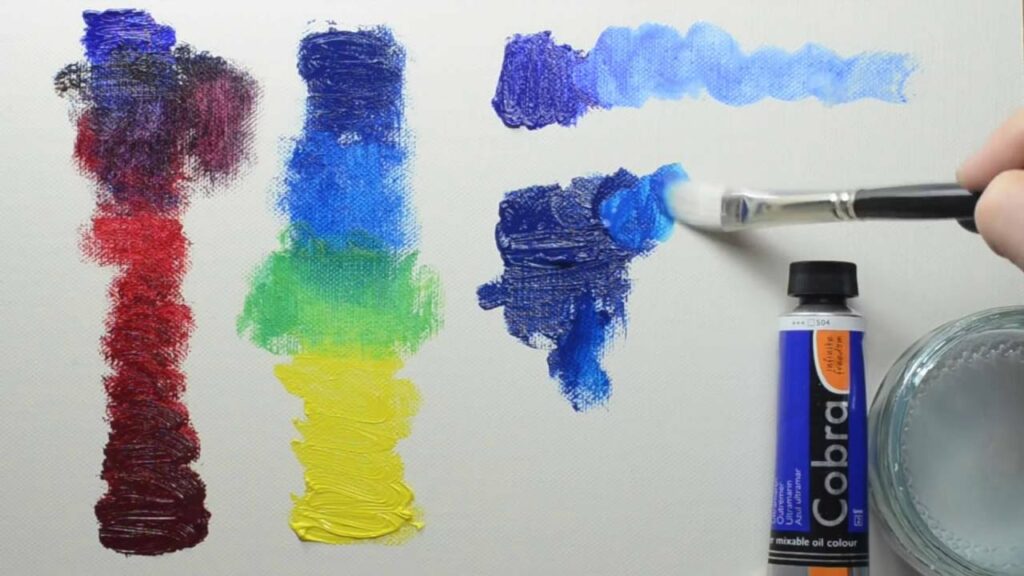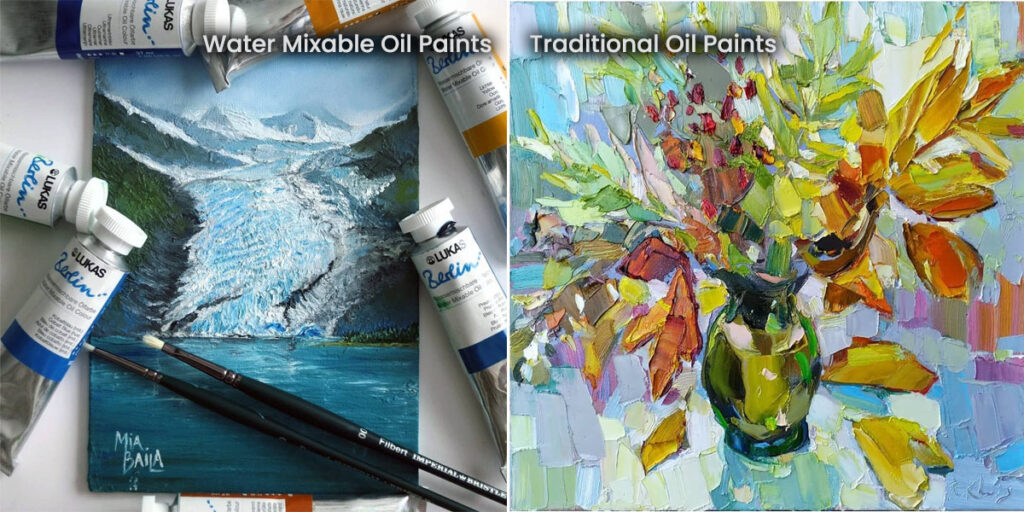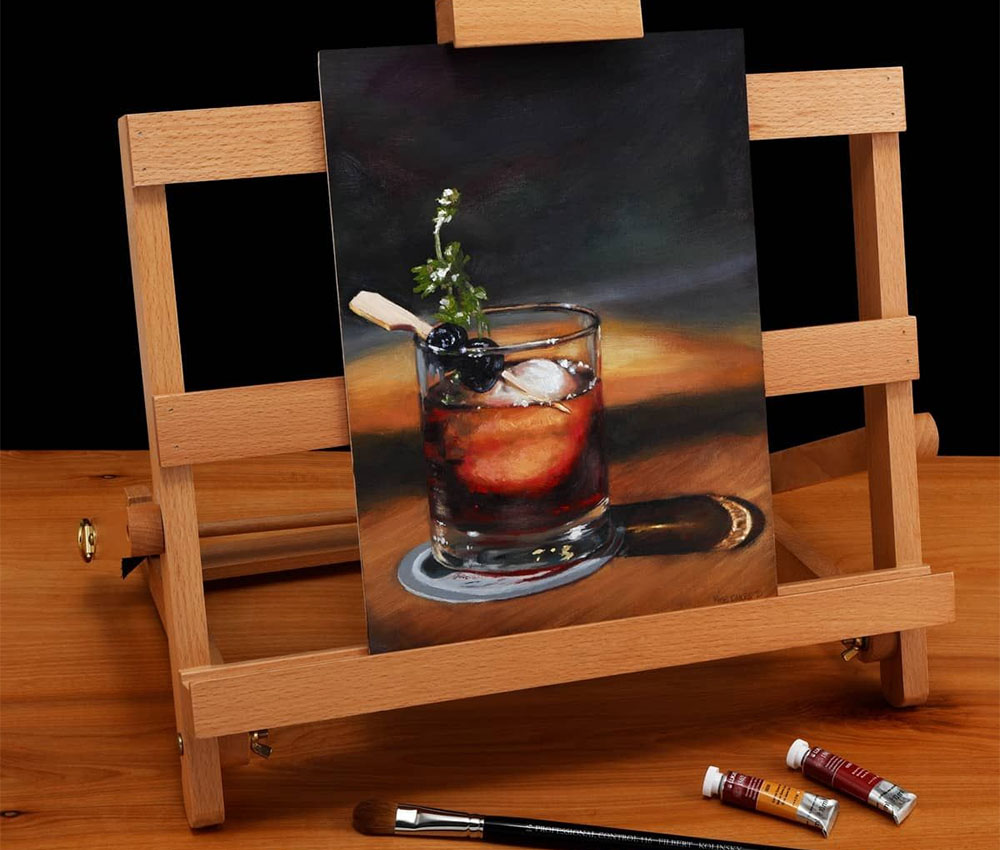Water Mixable Oil Paint vs. Traditional Oil Paint

Can YOU tell the difference between water mixable oil paints and traditional oil paints
Which is Right for You?
Welcome to the world of oil painting! In this article, we’ll explore the fascinating differences between water-mixable oil paint and traditional oil paint, helping you make an informed choice for your artistic journey.
Understanding Water Mixable Oil Paint:
Let’s begin by discovering the magic of water-mixable oil paint. These innovative paints are made using a modified oil binder that allows them to be thinned and cleaned up with water, making them a convenient alternative to traditional oil paints.

Art by Mia Baila w/ Lukas Berlin Water-Mixable Oil Paints
Binder
Water mixable oils consist of pigments, just like traditional oil paints, but their binder is designed to be soluble in water.
The binder used in water-mixable oils is typically a combination of modified vegetable oils and synthetic substances. These modifications make the oil binder more compatible with water, allowing for easy mixing and cleanup.
Despite the presence of water-soluble elements in the binder, water-mixable oils still retain the desirable properties of traditional oils, such as their creamy consistency, rich color saturation, and long-lasting durability.
Exploring Traditional Oil Paint:
Now, let’s uncover the traditional oil paint that has captivated artists for centuries. Traditional oil paints are made from pigments mixed with linseed oil, resulting in a luscious and buttery texture.
Drying Time: They have a slow drying time, allowing artists to work with the paint for an extended period. The blending capabilities and depth of color achieved with traditional oil paint are truly remarkable.
Comparing Water Mixable Oil Paint and Traditional Oil Paint:

Comparisons: Let’s compare these two fascinating paints side by side. First, let’s talk about the application and drying time.
Water mixable oil paints have a faster drying time compared to traditional oil paints. Depending on how thick they are applied, they can stay workable for around 48 hours, making them ideal for artists who prefer a quicker workflow.
On the other hand, traditional oil paints provide artists with more time to blend and layer colors, allowing for subtle transitions and complex effects.
Color Intensity/Pigment Options: When it comes to color intensity and pigment options, both types of paint offer a wide range of vibrant colors. However, traditional oil paints often have a broader selection of pigments, providing artists with more nuanced choices.
Clean up: Cleaning and maintenance are also important considerations. Water mixable oils can be cleaned with water, while traditional oils require solvents like mineral spirits.
Health: For artists concerned about health and the environment, water-mixable oil paints offer a more eco-friendly alternative.
Choosing the Right Paint for You:
Can YOU tell the difference between water-soluble oil paints and traditional oil paints?
Now that you understand the characteristics of both paints, how do you decide which one is right for you? Consider your painting style, preferences, and goals. If you value convenience, a shorter drying time, and easy cleanup, water-mixable oils might be the perfect fit.
If you enjoy traditional techniques, extended blending time, and a vast array of pigment choices, traditional oils might be your go-to option.
See Video: Starting a Painting with Water Soluble Oils

Tips for Working with Water Mixable Oil Paint and Traditional Oil Paint
Now that you’ve chosen your paint, here are some tips to enhance your artistic journey. When working with water-mixable oil paints, remember to use mediums specifically designed for these paints to maintain their integrity.
Combining water mixable oils with traditional oil mediums will make your paints non-water soluble, essentially turning them back into traditional oil paints.
Experiment with different techniques, such as glazing and impasto, to explore the full potential of traditional oil paints. Embrace the joys and challenges of each paint type and let your creativity flourish.
Remember, whether you choose water-mixable oil paint or traditional oil paint, what matters most is your passion and dedication to creating art. So, grab your brushes, mix your colors, and let your imagination soar!
Water-mixable oils and traditional oil paints are both popular choices for artists, but they differ in some key aspects.
In summary, the main difference between water-mixable oils and traditional oil paints lies in their ability to mix with water and the absence of solvents in the former.
Water-mixable oils offer a safer and more environmentally friendly alternative, with easier cleanup. However, traditional oil paints provide certain working properties and color qualities that some artists prefer.
Water-mixable oils, as the name suggests, can be mixed and thinned with water, eliminating the need for solvents like turpentine or mineral spirits that are required with traditional oil paints. This makes water-mixable oils a safer and more environmentally friendly option, as they produce fewer harmful fumes and are easier to clean up.
Top Questions and Answers
Are water-mixable oil paints as durable as traditional oil paints?
A: Yes, water-mixable oil paints are formulated to be just as durable as traditional oil paints. They offer excellent lightfastness and archival properties, ensuring that your artwork will last for generations.
Are water mixable oil paints suitable for professional artists?
A: Yes, water mixable oil paints are used by both beginners and professional artists alike. They offer the convenience of water-based cleanup without compromising on the quality and versatility required for professional artwork.
Do water-mixable oil paints have a strong odor like traditional oil paints?
A: No, one of the advantages of water-mixable oil paints is that they have a significantly reduced odor compared to traditional oil paints. This makes them a more pleasant option for artists who are sensitive to strong odors or prefer a more odorless painting experience.
Are water mixable-oil paints environmentally friendly?
A: Water mixable oil paints offer a more environmentally friendly option compared to traditional oil paints, as they eliminate the need for harsh solvents and reduce the release of harmful fumes into the environment. However, it’s still important to dispose of any paint waste responsibly.
More Resources





